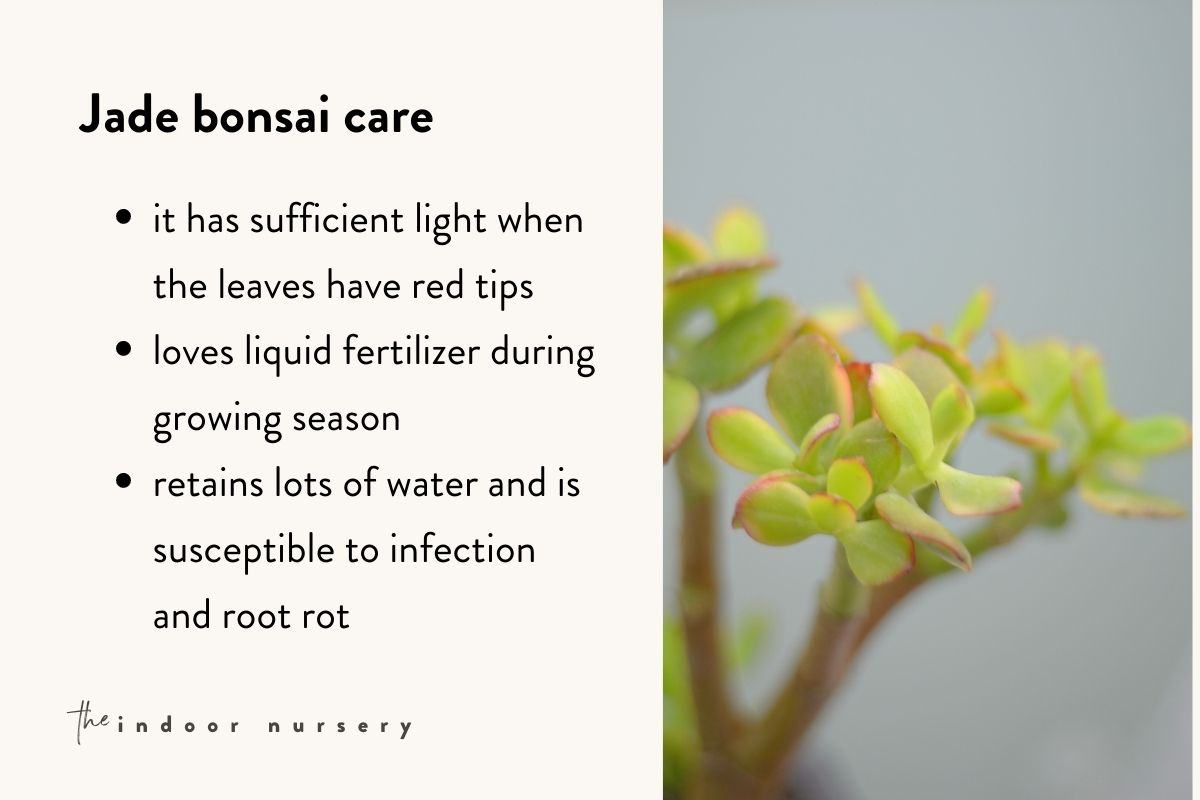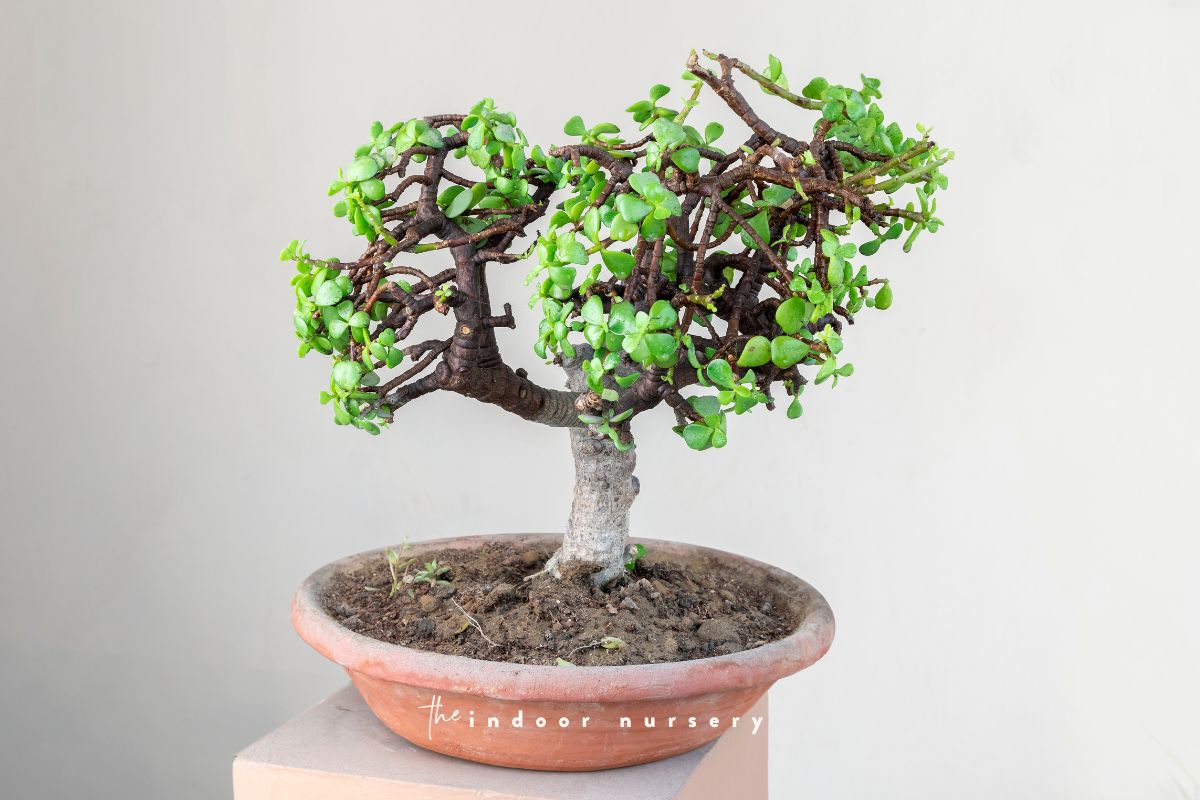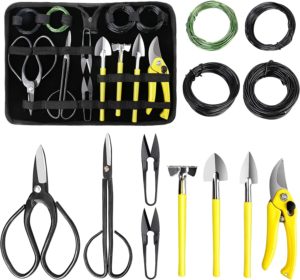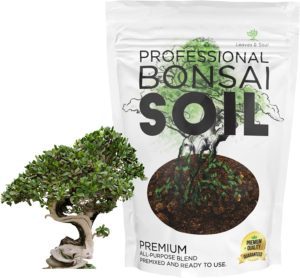Key takeaways
- The Jade is an evergreen tree species that typically grows in South Africa.
- Although this tree is easy to care for, it must never be exposed to temperatures that reach below 50 degrees Fahrenheit (10 Celsius).
- You’ll know it has sufficient sunlight when its elliptic leaves develop red-colored edges.
- During autumn, the Jade bonsai tree looks particularly lovely because of its white blossoms with an impressive star shape.
- The best bonsai styles for the Jade tree are the clump and informal upright because of their thick and dense branch structure.
Jade plants make the dreamiest indoor bonsai trees. Since jade plants retain lots of water in the trunk and branches, the plump jade tree makes for a fun bonsai experience with lots of potential for shaping.
They’re also hardy plants, making it easy to have a clear conscience as you’re trying new cultivation methods.
Here is what you need to know about jade bonsai care so that you can have a long and adventurous life with your jade bonsai tree 🙂

Location and Placement
These sun loving houseplants do better in warmer climates with gentle winter months. As such, Jade bonsai trees grow well in locations where there are high light conditions. If you are a beginner in bonsai cultivation, jade plants are an excellent species to grow because they are fairly easy to maintain. If you plan to place your dwarf jade bonsai outdoors, then make sure the minimum temperature is 50 degrees Fahrenheit. Most jade bonsai plants grown indoors are quite happy, as long as they get full sun for at least 5 hours a day. When autumn comes, you will appreciate the tree even more because of its strikingly beautiful blooms beginning late September or early October.
Watering
Since jade trees can retain water in their juicy leaves, they don’t need frequent watering and can withstand long periods without water. With this in mind, water your dwarf jade bonsai lightly while allowing the soil to dry between watering. While jade trees can be somewhat drought tolerant, be wary of underwatering. If you want to know whether your plant needs a watering or not, then lift the pot to determine if it’s still heavy and moist or light and dry. Or use a moisture meter to get a clear reading of moisture levels. This can help you find the sweet spot for watering your jade bonsai tree and get to know how much moisture your plant likes.
During winter months, it is ideal to water the Jade tree every 2 to 3 weeks and make sure you allow the soil to “breathe” before you start pouring more water on your plant. Like other succulents, dwarf jade plants need good drainage. Use well draining soil and make sure there are drainage holes in your bonsai pot when planting or repotting.
Fertilizing
The right time to fertilize your dwarf jade plant is during spring (aka growing season) when you notice new growth on the plant. You can feed your dwarf Jade with a balanced type of fertilizer to promote vigorous growth. A liquid organic fertilizer may work, as long as you dilute the latter in water to reduce it to 1/2 strength. Feed your jade plant every two weeks in springtime and once a month during winter. Jade plants respond well and quickly to fertilizing so you’ll get an abundant growth season out of proper care and fertilizing during the springtime.
Pruning and Wiring
The Jade tree is an excellent species for bonsai cultivation because it grows slowly. In fact, it may take about 2 decades before it reaches just 3 feet tall. As succulents do, jade plants hold a lot of water in their trunks and branches, making them susceptible to rotting. Be mindful of this when pruning and avoid using cut-paste.
If you want to strengthen its growth near its bottom part, you must pinch back new growth. Its wounds can heal in as little as 1 to 2 weeks, unless its cuts are deep.
When wiring the Jade bonsai tree, make sure you start at the base part of the bonsai until you reach the branch that you intend to train. In about 3 to 6 weeks, you can expect its branches to maintain the desired shape. By this time, you may remove the wire to prevent it from cutting through the soft water-soaked branches.
Repotting
Repot your dwarf jade plant every two years during the spring, its natural growth season. Use well draining soil, ideally succulents and cactus soil.
You can trim the roots when you repot, but I don’t recommend trimming more than a third of the roots so that your bonsai tree isn’t too shocked to take advantage of the growing season. Use clean sharp scissors or bonsai shears to cut the roots. You can clean the tools with a cotton swab and rubbing alcohol. Maintaining clean tools when you prune will help prevent infection or root rot.
Once you’ve settled the bonsai tree into its new small pot, let the fresh soil dry out for about a week before watering again. Allow any damaged roots or those you trimmed to callous over before watering to avoid root rot.
learn more about bonsai plants
- How to keep bonsai leaves small
- How long do bonsai trees live? Longer than you.
- How to care for your Japanese black pine bonsai
- How to grow aqua bonsai (water bonsai)
- How to care for a Red Maple bonsai tree
- Pomegranate bonsai tree care guide for beginners
- 15 bonsai styles and shapes that will inspire you
- Bonsai palm tree care: How to care for palm tree bonsais





